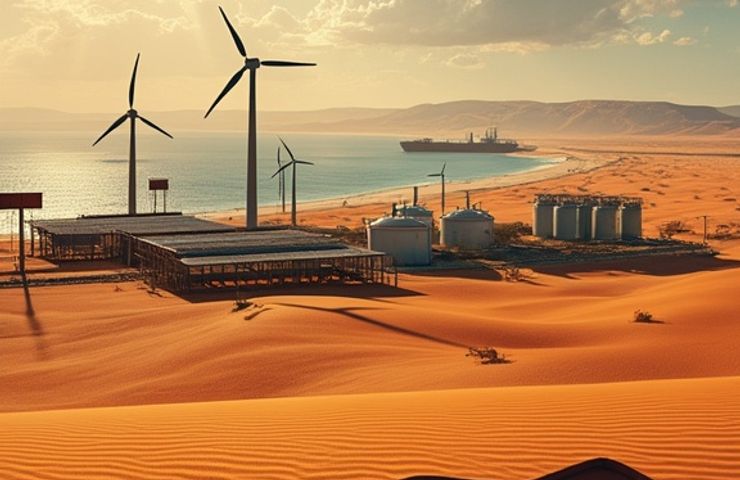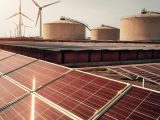
Green Hydrogen Project in Namibia Faces Setback as RWE Exits Ammonia Offtake
October 1, 2025Project Unraveling in the Namib Desert
Picture a crisp morning in Windhoek, the sun climbing over the vast Namib dunes—and then the news drops: on September 29, 2025, RWE AG decided to walk away from its non-binding offtake MoU with Hyphen Hydrogen Energy. That move essentially sidelines Namibia’s $10 billion plan for exporting clean ammonia made via solar- and wind-powered electrolysis near the Tsau //Khaeb National Park. According to RWE, the issue isn’t a land or wildlife dispute—it’s simply that Europe’s appetite for hydrogen derivatives hasn’t grown as fast as they’d hoped.
Since the MoU never locked in volumes, prices, or delivery dates, Hyphen had no guaranteed revenue, while RWE could bow out penalty-free. It’s a stark reminder of the risks tied to early-stage sustainable energy ventures.
Technical Deep Dive: Green Hydrogen and Ammonia Synthesis
At its core, Hyphen aimed to pull off a neat two-step trick. First, split water into hydrogen and oxygen with renewable-powered electrolysis. Next, feed that hydrogen into a modernized Haber-Bosch loop, where it combines with nitrogen from the air to produce green ammonia. You’re looking at over a 90% cut in CO₂ emissions compared to traditional steam methane reforming.
But this low-carbon magic comes with a price tag. Electrolyzer stacks are wallet-drainers, and the supply chains for catalysts and high-purity membranes are still finding their feet. The original blueprint called for several hundred megawatts up front, ramping to gigawatts if financing and offtake materialized. Then there’s grid integration in a remote desert: you need batteries or backup generators to smooth out the ups and downs of solar and wind. And let’s not overlook the pipeline to Walvis Bay port, where ammonia would be chilled, stored, and loaded onto specialized vessels. That port upgrade—designed to meet the IMO’s IGF code for ammonia bunkering—hinged on solid early offtake volumes to pencil out.
Namibia’s Economic Context and Policy Drive
With just 2.6 million people and a per-capita GDP of about $4,600, Namibia sits in the middle-income bracket. A recent World Bank downgrade had the government double down on renewables, seeing them as the ticket to economic growth. Mining—especially uranium and diamonds—still makes up over 10% of GDP, but price swings have pinched public coffers. So in 2023, Namibia rolled out its National Green Hydrogen Strategy, offering fast-track permits, tax holidays, and a state-backed offtake guarantee to jumpstart the sector.
Hyphen was billed as the crown jewel. Early estimates—though not independently verified—hinted at 15,000 construction jobs and 3,000 permanent roles. The plan even counted on roughly $500 million from voluntary carbon credits to grease the wheels on infrastructure. Now, with RWE out the door, policymakers need fresh incentives and new revenue ideas.
Strategic Fallout for Namibia’s Hydrogen Ambitions
For President Netumbo Nandi-Ndaitwah’s administration, Hyphen was the linchpin to diversify beyond mining. Development finance institutions had teed up nearly $1 billion in credit support, conditional on a firm offtake partner. With RWE bolting, lenders will be sizing up risk, and big investors—from multilateral banks to pension funds—may demand deeper equity stakes or ironclad guarantees.
Without a marquee anchor buyer, the project’s capital stack looks shaky. Hyphen’s backers are now weighing their next moves: courting Asian utilities, handing over more equity, or pivoting to smaller modular setups. Each path carries its own trade-offs—in financing costs, timelines, and long-term scalability.
Indigenous Rights and Environmental Stakes
Although RWE was quick to clarify that “social complaints did not drive our decision,” the site overlaps protected desert lands and Nama indigenous territory. The Nama Traditional Leaders Association filed formal grievances, invoking the UN Declaration on the Rights of Indigenous Peoples and demanding Free, Prior, and Informed Consent. They also flagged water concerns—electrolysis guzzles freshwater in a region where every drop is precious.
The European Centre for Constitutional and Human Rights (ECCHR) threw its weight behind the Nama, lauding RWE for setting a social license precedent. Environmental impact studies underlined threats to desert-adapted plants and wildlife, reminding us that rolling out sustainable energy isn’t just a technical or market puzzle—it’s a social and ecological balancing act.
Comparative Context in the Global Green Hydrogen Arena
Namibia’s stumble isn’t unique. Across Australia, the Middle East, and Europe, flagship green hydrogen ventures—from Saudi Arabia’s NEOM megaproject to Spain’s HyDeal—have stretched timelines amid cost overruns and lukewarm offtake. Many developers are now flirting with modular rollouts, carbon-capture hybrids, and courting buyers in Asia to hedge their bets.
Europe’s REPowerEU plan could spark fresh demand for low-carbon ammonia in fertilisers and ship bunkering, but industrial decarbonization is still proceeding with caution.
Looking Ahead: Rebuilding Momentum
So where does Hyphen go next? The company says it’s deep in talks with Asian utilities and alternate European offtakers. Potential lifelines include teaming up with shipping lines eager to trial ammonia bunkering or cracking ammonia for onshore hydrogen infrastructure hubs. But pulling that off will demand a clever mix of policy tweaks—like blending mandates for hydrogen in manufacturing—alongside inventive financing tools and genuine community buy-in. Nail that cocktail, and Namibia’s green hydrogen dreams could still take flight.
About RWE AG
RWE AG, founded in 1898, is one of Europe’s largest power utilities. They operate onshore and offshore wind farms, solar parks, and hydropower facilities. In 2024, they pulled in around €30 billion in revenue, proof of their deep investment in sustainable energy.



 With over 15 years of reporting hydrogen news, we are your premier source for the latest updates and insights in hydrogen and renewable energy.
With over 15 years of reporting hydrogen news, we are your premier source for the latest updates and insights in hydrogen and renewable energy.